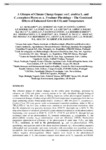Use este identificador para citar ou linkar para este item:
http://www.alice.cnptia.embrapa.br/alice/handle/doc/1035429Registro completo de metadados
| Campo DC | Valor | Idioma |
|---|---|---|
| dc.contributor.author | RAMALHO, J. C. | pt_BR |
| dc.contributor.author | SEMEDO, J. N. | pt_BR |
| dc.contributor.author | PAIS, I. P. | pt_BR |
| dc.contributor.author | SCOTTI-CAMPOS, P. | pt_BR |
| dc.contributor.author | RODRIGUES, A. P. | pt_BR |
| dc.contributor.author | FORTUNATO, A. S. | pt_BR |
| dc.contributor.author | LEITÃO, A. E. | pt_BR |
| dc.contributor.author | LOPES, E. | pt_BR |
| dc.contributor.author | PALOS, I. | pt_BR |
| dc.contributor.author | SILVA, M. J. | pt_BR |
| dc.contributor.author | GOULÃO, L. | pt_BR |
| dc.contributor.author | BATISTA-SANTOS, P. | pt_BR |
| dc.contributor.author | RIBEIRO-BARROS, A. I. | pt_BR |
| dc.contributor.author | SIMÕES-COSTA, M. C. | pt_BR |
| dc.contributor.author | MARTINS, L. D. | pt_BR |
| dc.contributor.author | TOMAZ, M. A. | pt_BR |
| dc.contributor.author | MAIA, R. | pt_BR |
| dc.contributor.author | MÁGUAS, C. | pt_BR |
| dc.contributor.author | PESSOA, M. F. | pt_BR |
| dc.contributor.author | REBOREDO, F. H. | pt_BR |
| dc.contributor.author | LIDON, F. C. | pt_BR |
| dc.contributor.author | SANGLARD, L. M. | pt_BR |
| dc.contributor.author | MORAIS, L. E. | pt_BR |
| dc.contributor.author | ARAÚJO, W. L. | pt_BR |
| dc.contributor.author | GHINI, R. | pt_BR |
| dc.contributor.author | DaMATTA, F. M. | pt_BR |
| dc.date.accessioned | 2016-01-28T11:11:11Z | pt_BR |
| dc.date.available | 2016-01-28T11:11:11Z | pt_BR |
| dc.date.created | 2016-01-28 | pt_BR |
| dc.date.issued | 2015 | pt_BR |
| dc.identifier.citation | In: INTERNATIONAL CONFERENCE ON COFFEE SCIENCE, 25., 2014, Armenia. Leveraging knowledge for coffee sustainability: proceedings. Armenia: Association for Science and Information on Coffee, 2014. p. 42-49. | pt_BR |
| dc.identifier.uri | http://www.alice.cnptia.embrapa.br/alice/handle/doc/1035429 | pt_BR |
| dc.description | Summary: The effective impact of climate changes on the coffee plant physiology, promoted by enhanced air [CO2] and global warming remain to be fully elucidated through biological studies. Therefore, this work aims at linking important coffee physiological responses to environmental changes of enhanced growth [CO2] and temperature on genotypes from the two major producing species. Potted plants from C. arabica cv. IPR 108 and of C. canephora cv. Conilon Clone 153 were grown under environmental controlled conditions, either at 380 or 700 ?L CO2 L-1 air, for 1 year, without water, nutrient or root development restrictions. After that the temperature was gradually increased from 25/20 ºC (day/night) up to 42/34 ºC. The long-term impacts of enhanced growth [CO2] and enhanced temperature on the photosynthetic functioning were assessed at 25/20 ºC, 31/25 ºC, 37/30 ºC and 42/34 ºC, through leaf gas exchanges (rates of net photosynthesis, Pn, stomatal conductance, gs, transpiration, Tr, and photosynthetic capacity, Amax), instantaneous water use efficiency (iWUE), fluorescence parameters (photochemical efficiency of the photosystem II under dark, Fv/Fm, and light, Fv?/Fm?, conditions, as well as the photochemical, qP, and non-photochemical, NPQ, quenchings, and quantum yield of the linear electron transport, ?e), photosynthetic pigments (chlorophyll and carotenoids) and some molecules with antioxidant role (ascorbate and ?-tocopherol). The results showed that enhanced [CO2] stimulates photosynthetic functioning, without negative down-regulation. Minor impacts were found in the photochemical performance until 37 ºC, but extensive impacts were shown at 42 ºC, especially in IPR108. Remarkable was the finding that enhanced [CO2] preserved a higher functional status (Pn, Amax, Fo, Fv/Fm) at high temperatures (37 and 42 ºC), what seems quite relevant under the predicted climate changes and global warming scenarios. | pt_BR |
| dc.language.iso | eng | eng |
| dc.rights | openAccess | eng |
| dc.title | A glimpse of climate change impact on C. Arabica L. and C. Canephora Pierre ex A. Froehner physiology: the combined effects of enhanced growth CO2 and temperature. | pt_BR |
| dc.type | Artigo em anais e proceedings | pt_BR |
| dc.date.updated | 2016-01-28T11:11:11Z | pt_BR |
| dc.subject.thesagro | Café | pt_BR |
| dc.subject.nalthesaurus | Climate change | pt_BR |
| riaa.ainfo.id | 1035429 | pt_BR |
| riaa.ainfo.lastupdate | 2016-01-28 | pt_BR |
| dc.contributor.institution | JOSE C RAMALHO, Instituto Investigação Científica Tropical; JOSE NOBRE SEMEDO, Instituto Nacional Investigação Agrária e Veterinária; ISABEL P PAIS, Instituto Nacional Investigação Agrária e Veterinária; PAULA SCOTTI-CAMPOS, Instituto Nacional Investigação Agrária e Veterinária; ANA PAULA RODRIGUES, Universidade de Lisboa; ANA S FORTUNATO, Instituto Investigação Científica Tropical; ANTONIO E LEITAO, Instituto Investigação Científica Tropical; E LOPES, Instituto Investigação Científica Tropical; I PALOS, Instituto Investigação Científica Tropical; M J SILVA, Instituto Investigação Científica Tropical; LUIS GOULAO, Instituto Investigação Científica Tropical; PAULA BATISTA-SANTOS, Instituto Investigação Científica Tropical; ANA I RIBEIRO-BARROS, Instituto Investigação Científica Tropical; MARIA CRISTINA SIMÕES-COSTA, Instituto Investigação Científica Tropical; LIMA D MARTINS, Instituto Investigação Científica Tropical; MARCELO ANTONIO TOMAZ, UFES; R MAIA, Universidade de Lisboa; CRISTINA MAGUAS, Universidade de Lisboa; M F PESSOA, Universidade Nova de Lisboa; FERNANDO H REBOREDO, Universidade Nova de Lisboa; FERNANDO C LIDON, Universidade Nova de Lisboa; LILIAN MARIA VINCIS PEREIRA SANGLARD, UFV; LEANDRO ELIAS MORAIS, UFV; WAGNER L ARAUJO, UFV; RAQUEL GHINI, CNPMA; FABIO MURILO DAMATTA, UFV. | pt_BR |
| Aparece nas coleções: | Artigo em anais de congresso (CNPMA)  | |
Arquivos associados a este item:
| Arquivo | Descrição | Tamanho | Formato | |
|---|---|---|---|---|
| 2015AA015.pdf | 612,21 kB | Adobe PDF |  Visualizar/Abrir |









